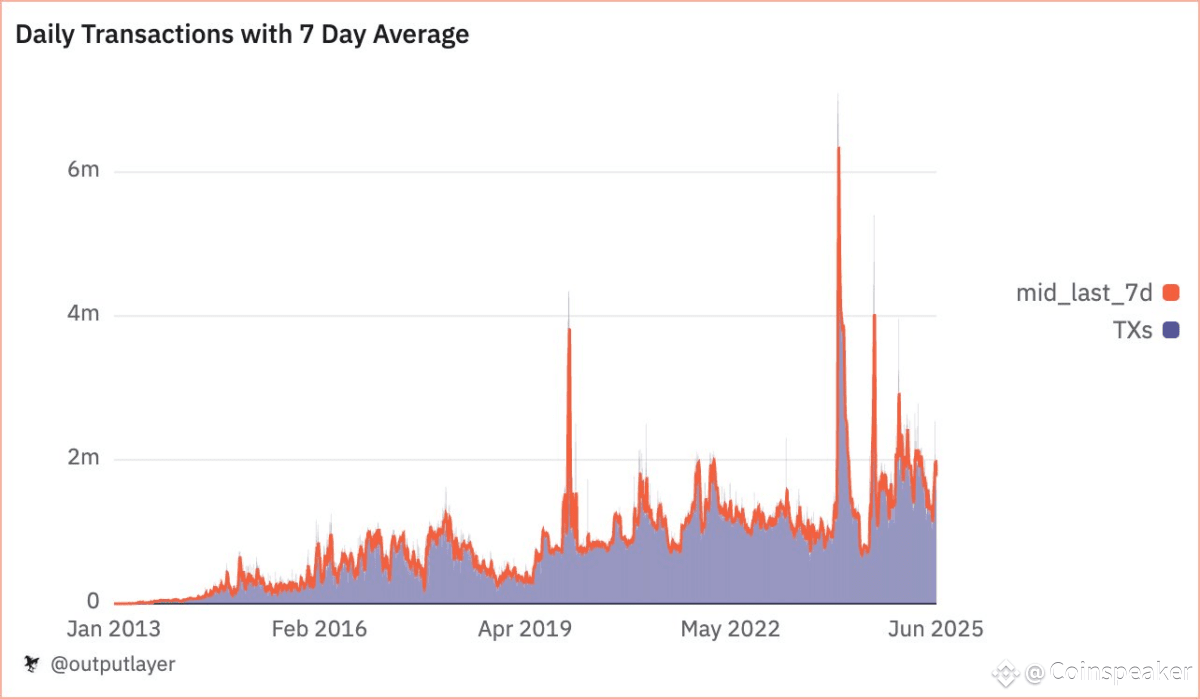The XRP Ledger, also known as XRPL, is one of the world’s leading blockchain networks, created by Ripple and hosting the XRP token, ranked third by market capitalization as of August 1. Besides the high market value of its native token, the chain has also presented solid metrics in different categories last month (July).
A recently published Dune report, on August 1, highlights some of these metrics. They include XRPL transaction count, new wallet addresses, transaction volume in decentralized exchanges (DEX), cross-chain operations, and stablecoin data. XRPL “keeps proving why it’s one of the most resilient [chains] in crypto,” said the Dune account in a thread on X.
1/ It’s been 30 days since XRPL data went live on Dune, and the chain keeps proving why it’s one of the most resilient in crypto.
Here’s a quick update on what’s changed in just a month 👇 https://t.co/9otxcLUpi1
— Dune (@Dune) August 1, 2025
Notably, the blockchain registered over 70 million new transactions in July, totaling 3.83 billion transactions permanently stamped in the ledger. July 2025 represents approximately 1.83% of the total, and 13.5 million have been made in the last week alone. According to Dune, this data results in a daily average of 1.8 million transactions, putting XRPL’s network activity among the highest in comparison to other chains.

XRPL Daily Transactions with 7-Day Average | Source: Dune Dashboard by @outputlayer
What caught the analyst’s eye, however, was the fact that a 13-year-old chain is “still onboarding [new users] at startup speed.” Data from the dashboard shows 3,000 new accounts created daily, with over 1 million in 2025.
Stablecoins and Cross-Chain Operations on XRPL
Overall, the demand for stablecoins has been growing worldwide, giving this asset class increasing importance for international and domestic transactions. The US dollar holds the position as the most popular fiat currency backing these tokens, but other countries also have their own pegged representatives.
Interestingly, the BBRL—a stablecoin pegged to the Brazilian Real (BRL), running on XRPL, and created by BrazaBank—had over $4.2 million worth of new tokens issued in July 2025. With this issuance rate, the XRP Ledger holds the second position among all chains for Brazil’s stablecoins, only behind BRZ, which runs natively on the Ethereum Virtual Machine (EVM).
Moreover, RLUSD has more than doubled its daily transfers from 5,000 to over 12,000 in the last 30 days. Ripple launched RLUSD in late 2024, and the USD stablecoin is backed by cash and cash-equivalent reserves held at Standard Custody, a Ripple subsidiary regulated in New York.
The company has been working to expand the RLUSD market to Europe, as Coinspeaker reported on July 15, which could have contributed to the massive increase in its daily transactions.
XRP has also seen significant increases in its demand on other chains, registering over $165 million moved via Axelar to EVM blockchains. On Near Intents, XRP $3.02 24h volatility: 1.2% Market cap: $179.15 B Vol. 24h: $9.45 B represents 5.4% of the protocol’s total value locked (TVL), with nearly $700,000 in liquidity available for cross-chain swaps, according to another Dune dashboard.
As it stands, this data backs what the Dune report called notable resilience for a blockchain that is 13 years old. XRPL is proving it can compete with new technologies besides the already notable performance of its native token, XRP.
next
The post Ripple’s XRP Ledger Records 70M Transactions in July, Proves Blockchain Resilience appeared first on Coinspeaker.

